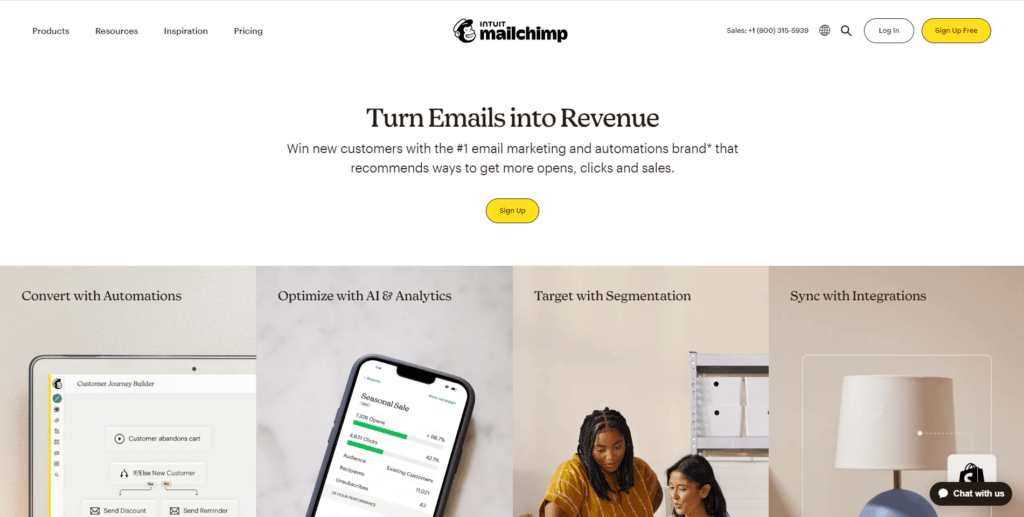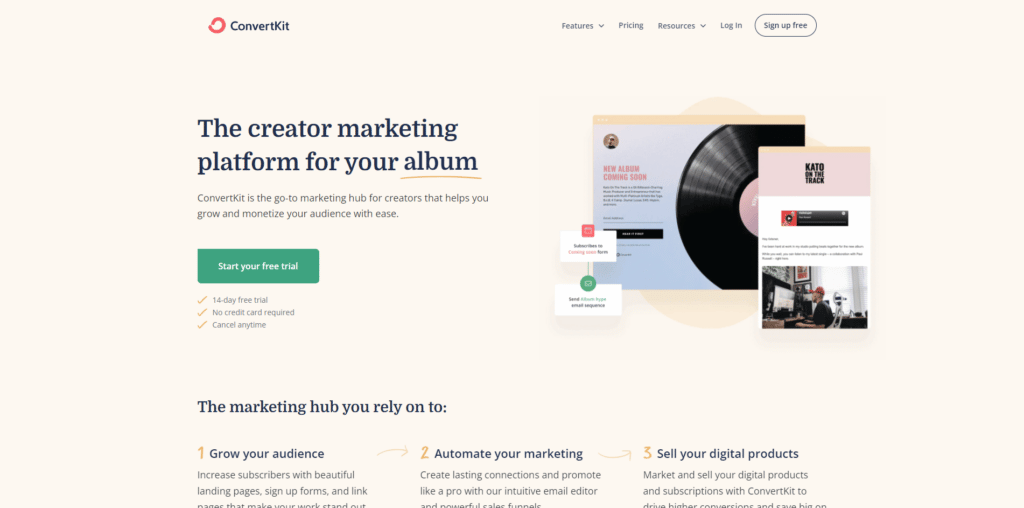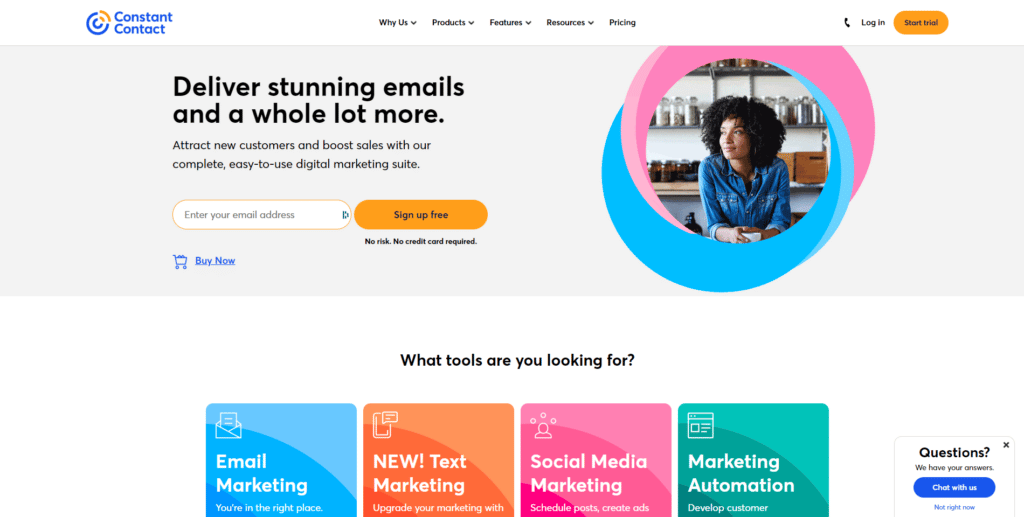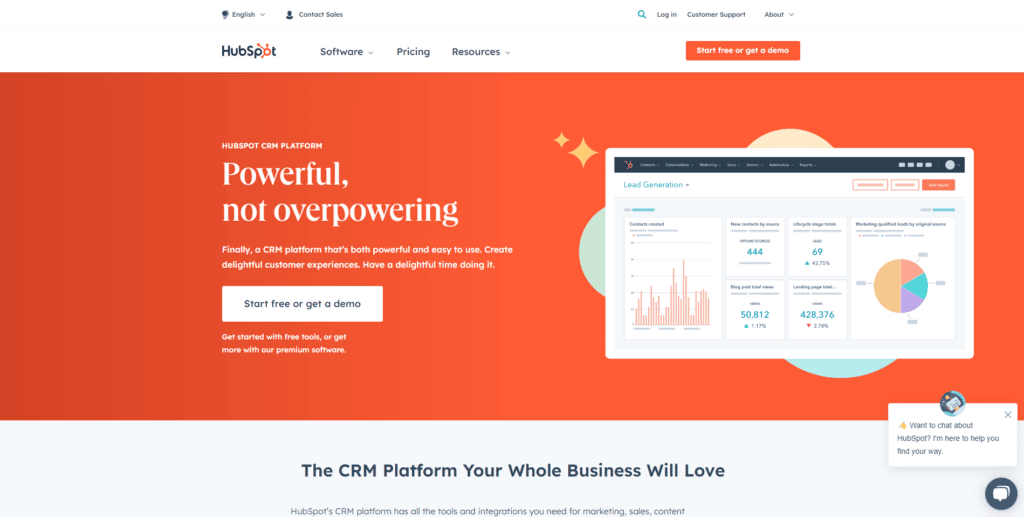MailChimp. ConvertKit. Constant Contact. There are tons of email marketing platforms out there. Knowing which one to pick is a daunting task.
But it doesn’t have to be! The simple fact is that there are lots of really good options for email marketing. Picking the right one is less about avoiding service issues with any particular company than it is about finding the one that’s just perfect for your particular needs.
In this article, we’re going to cover five popular email marketing platforms. They are Mailchimp, ConvertKit, ActiveCampaign, Constant Contact, and Hubspot. All of the platforms are great, but each one has a slightly different niche. We’ll help you find the one that’s right for you!
A Quick Primer on Email Marketing
Email marketing is one of the most effective types of marketing today. In 2019, almost 300 billion emails were sent per day. It is inexpensive to send emails and there are lots of options to allow you to send just the right emails to just the right people at just the right time.
Depending on who you ask, email marketing can have an ROI upwards of $36 for every dollar spent. It’s an almost comically good return on investment.
If you’re not sure where to start with email marketing, check out our earlier post on the subject. Once you understand how email marketing in general works, then you can make an informed decision on which email marketing platform is best for you.
1. Mailchimp

If you want to start sending emails today and be confident you chose a good platform for doing so, Mailchimp would be the one to pick.
Why? Well, it’s simple: Mailchimp is extremely popular and is, in a lot of ways, the “default option.” And much of this is for good reason – they’ve been in business for a long time, the tool is fast, it’s easy-to-use, and integrates with basically every CRM you’re likely to use.
Is Mailchimp the perfect tool? No, it has a couple of minor flaws. For one, if you’re looking to set up sophisticated email list segmentation and automation, Mailchimp is not the best place to start. Many email marketing platforms provide more functionality for less cost now.
Cost is another thing. While Mailchimp is affordable and a good value, prices have been creeping up over the last couple of years. If you’re on the fence about email marketing, in general, there are cheaper ways to try it out.
Overall, Mailchimp is best for those who just want to start email marketing today with a comfortable, well-understood, effective platform.
2. ConvertKit

ConvertKit is not the cheapest option, but a lot of people swear by it. In particular, we’ve noticed that content creators and influencers tend to gravitate toward ConvertKit.
The relationship between ConvertKit and creators is not hard to understand. For one, ConvertKit makes really good-looking emails, arguably the prettiest ones out there. It’s also very easy to use and plays nice with WordPress, which remains the most popular blogging CMS.
Additionally, ConvertKit offers some really nice features such as autoresending for emails that were not opened and always-available live chat and email support. (Most email providers have dedicated working hours, so around-the-clock support is really impressive.)
ConvertKit’s ease of use comes with a few tradeoffs. It’s tough to customize emails beyond a certain point on ConvertKit, in the same sense that it’s tough to customize an iPhone’s look. It also offers limited A/B testing, which can irritate some marketers who are trying to improve their email marketing skills.
ConvertKit is best for companies that prioritize content marketing such as writers or artists.
3. ActiveCampaign

As a marketer with a technical background, I have a soft spot for ActiveCampaign. It has some of the most sophisticated automation tools available. You can build really complex workflows to heavily customize your email recipients’ experiences and make them feel like you’re really catering to their needs.
Oddly enough, ActiveCampaign also provides really competitive pricing. In most cases, ActiveCampaign is actually the cheapest option on this list. Normally, that doesn’t go hand-in-hand with functionality, but ActiveCampaign is the exception.
That’s not to say that ActiveCampaign is right for everyone. It’s a surprisingly difficult to use system, especially for email marketing beginners. Additionally, reporting can be tough to read, and even finding out basic information like “why are my subscribers unsubscribing” is often buried in hard-to-find parts of the system.
If you can handle a little complexity and a slightly wonky interface, ActiveCampaign is best for sophisticated email automation and low prices.
4. Constant Contact

Mailchimp’s success has made it in many ways synonymous with the idea of email marketing. However, there is a growing appetite for a new “generalist” in the email marketing landscape that isn’t Mailchimp. Constant Contact is that, and there is a very good chance that it will be the go-to email marketing platform in a decade’s time.
Constant Contact is easy to use and makes good-looking emails. Rumor has it that Constant Contact also has the highest deliverability rates of all the email marketing platforms, although the difference between 99.89% deliverability on one platform and 99.91% deliverability on another is trivial.
Some find Constant Contact to be easier to use than Mailchimp, and I’m inclined to agree. It should be noted, however, that Constant Contact is still not a leader when it comes to automation. For that, you would likely be better off with ActiveCampaign.
Constant Contact is an all-around solid option and a promising new contender in email marketing software in general.
5. HubSpot

Email marketing is just one part of a larger marketing plan. Some people prefer to work with a dozen different types of software, all tied together through integrations. And others prefer to keep it all in one place.
For those who fall into the latter category, HubSpot is often the go-to platform for all marketing tasks. That means if you’re already using HubSpot, you may as well use their email marketing tool too. It’s pretty good.
In particular, HubSpot’s email marketing tool has good automated workflows and great A/B testing capabilities. If you’re already using HubSpot, you’ll probably love their email marketing tool.
If you’re not on the HubSpot ecosystem already, though, we would recommend finding a different tool that works better as standalone software.
HubSpot is best for email marketing that works as part of a larger software suite.
Final Thoughts
There are a lot of great email marketing platforms out there. There are more ways to go right than wrong here. The main differences have to do not with one company being head-and-shoulders over the others, but rather with how well each company’s software offering matches your plans.
If you need to start email marketing and you need to make a quick decision with a general tool, look into Mailchimp and Constant Contact. If you’re a big fan of using automation to set up complex personalized workflows, ActiveCampaign is the absolute best place to start. Content creators swear by ConvertKit.
And if you’re already in the HubSpot ecosystem? Well, just use their tool for email marketing – it’s rock solid!
You’ve done everything by the book. Your Kickstarter campaign is almost ready to launch.
You made a great product. Built an audience. Set up a campaign page.
But how do you ship it?
We put this checklist together to help you get started. It's free.





